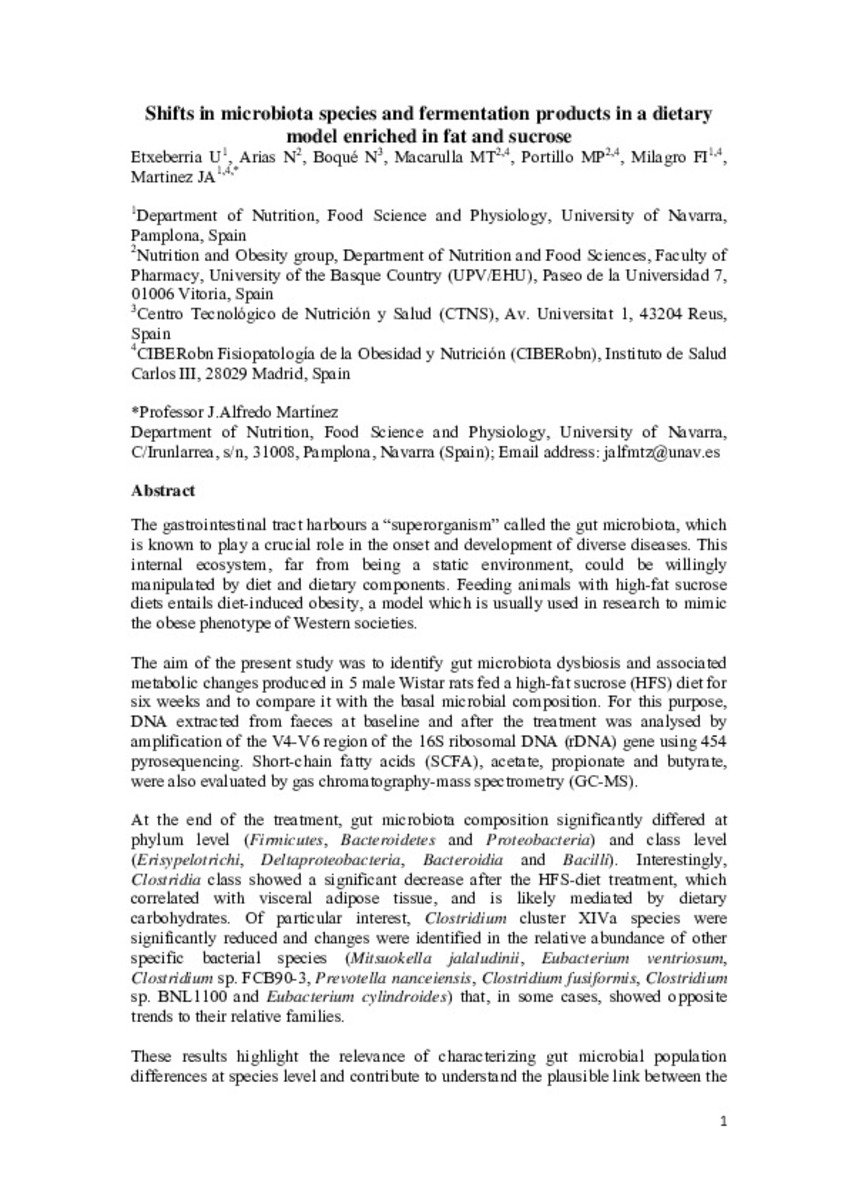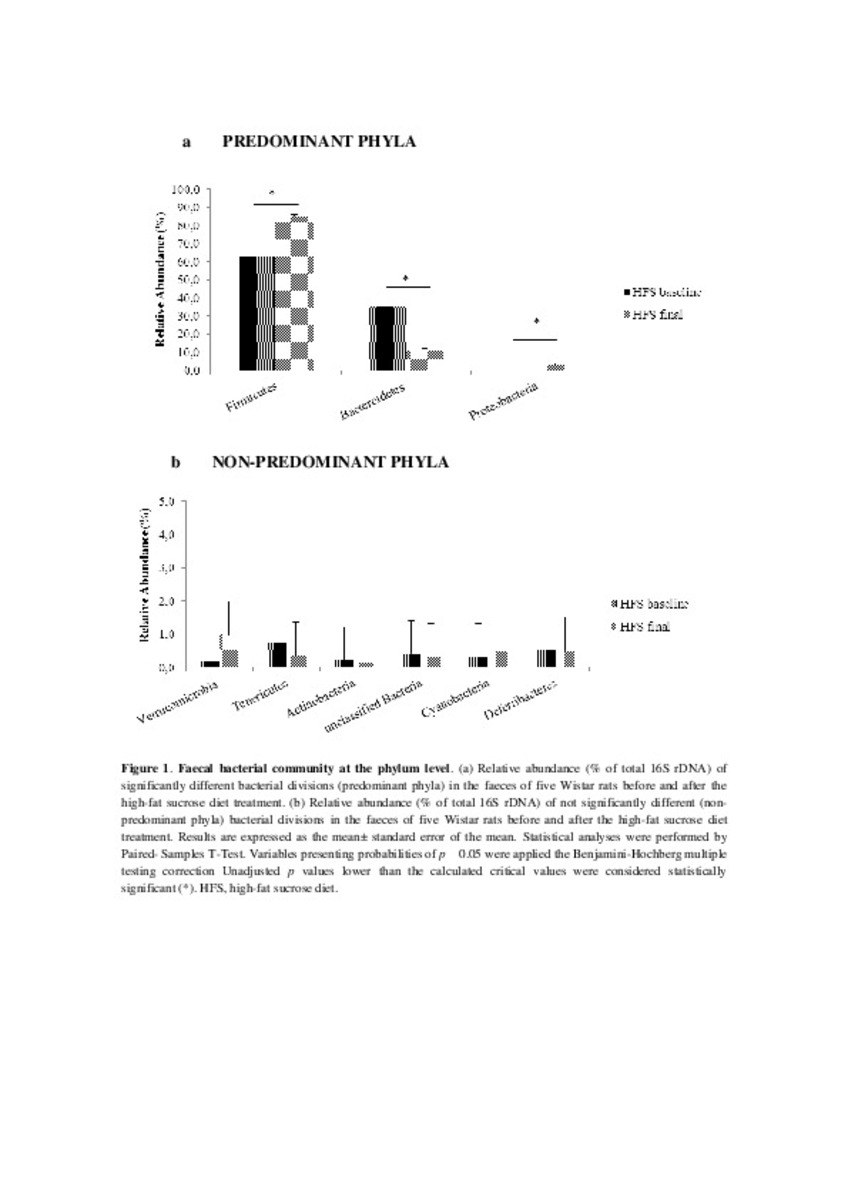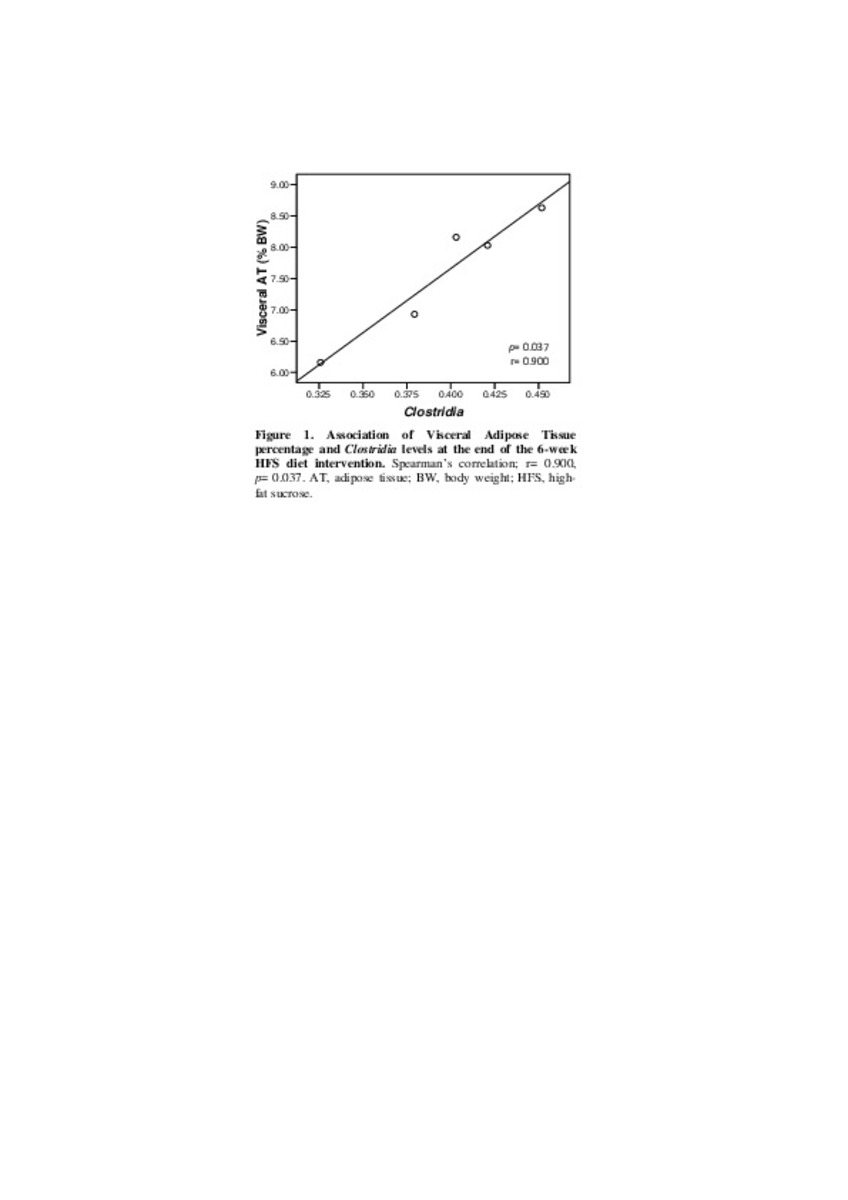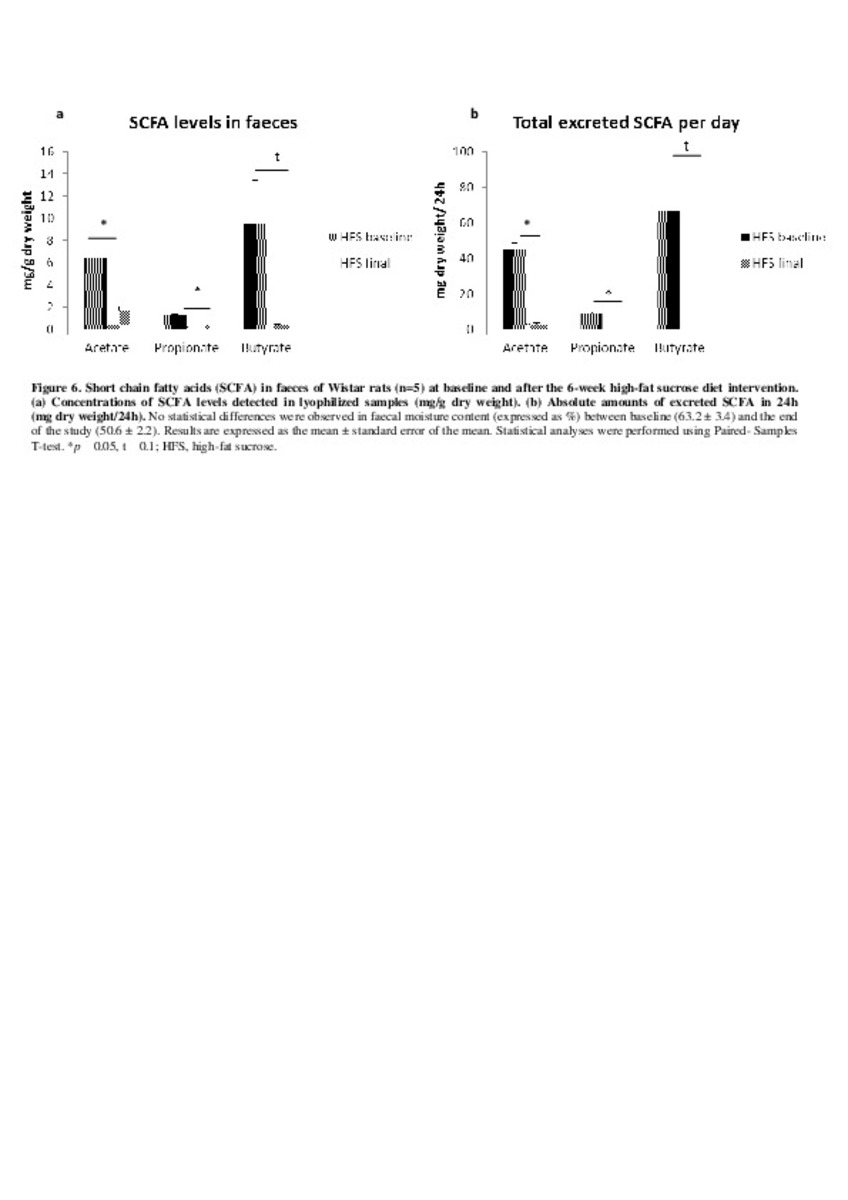Shifts in microbiota species and fermentation products in a dietary model enriched in fat and sucrose
Palabras clave :
Short chain fatty acids
Erysipelotrichi
High-fat sucrose diet
Pyrosequencing
Gut microbiota
Fecha de publicación :
2015
Editorial :
Wageningen Academic Publishers
Proyecto:
Ministerio de Economía y Competitividad (AGL2011-27406-ALI), Instituto de Salud Carl os III (CIBERobn), Government of the Basque Country (IT-572-13) and University of the Basque Country (UPV/EHU) (ELDUNANOTEK UFI11/32). Línea Especial about Nutrition, Obesity and Health (University of Navarra LE/97, Spain) for the financial support and the Department of Education, Language policy and Culture from Government of the Basque Country.
Nota editorial :
The original publication is available at http://www.wageningenacademic.com/doi/abs/10.3920/BM2013.0097
Cita:
Etxeberria U, Arias N, Boqué N, Macarulla MT, Portillo MP, Milagro FI, et al. Shifts in microbiota species and fermentation products in a dietary model enriched in fat and sucrose. Benef Microbes. 2015 Mar;6(1):97-111
Aparece en las colecciones:
Estadísticas e impacto
0 citas en

0 citas en

Los ítems de Dadun están protegidos por copyright, con todos los derechos reservados, a menos que se indique lo contrario.













